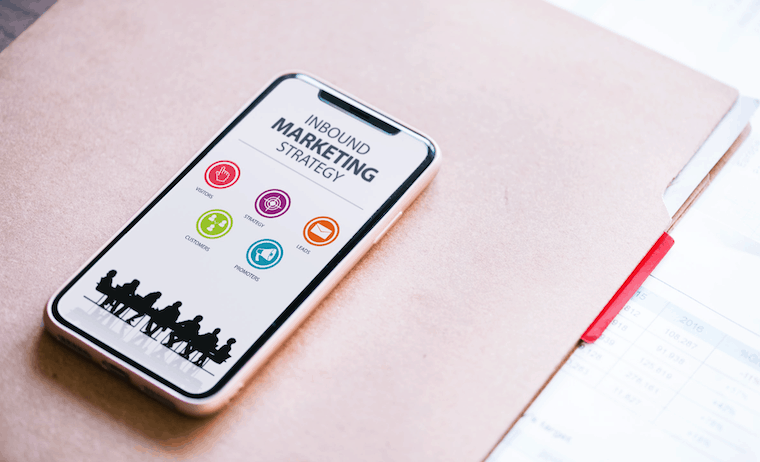Search engine optimization is often listed as one of the most popular lead generation strategies for B2B vendors, but its central role in the process is not always given proper attention.
Most of these strategies, while often being mentioned alongside SEO, simply do not work without an optimized website. Take, for instance, the strategies we’ll talk about here:
- Content marketing
- Social media marketing
- Email marketing
You can probably see how SEO would stand out there. You can start any of those campaigns regardless of how much you’ve invested in the other ones; but none of them would be possible to plan or execute without the infrastructure built around a well-optimized website.
Naturally, there still are effective strategies out there that don’t directly rely on search engine optimization, like print and TV advertising or exhibiting at trade shows, but even they benefit from the audience insights that SEO provides.
Let us, however, focus on the strategies that are most heavily supported and amplified by your SEO efforts, and examine how you can benefit from them.
Content marketing
It is practically impossible to talk about SEO best practices for B2B websites without mentioning content marketing as one of the most potent ways to use a website that already has some search visibility for lead generation.
This strategy is not first on our list by accident. You start scratching the surface of content marketing as soon as you add a blog to your site, but it’s only once your site actually gains some traction through basic SEO that you can really dive in.
One of the things that you can do with a site that has at least some authority is create invaluable lead magnets in the form of webinars, whitepapers, case studies, or other resources that people might be perfectly willing to share their email for.
Of course, the fact that you have to impress several decision makers in order to actually make a sale means that your content can’t just serve one purpose and appeal to only one group of people. That is to say that a lot of your content won’t be created just so it can perhaps show up at the top of the search results page, but instead to ensure that everyone, regardless of how they’ve reached you, gets moved one step closer to conversion.
Social media
Even without the existence of professional networking sites like LinkedIn and other similar platforms, the wealth of data social networks offer is spectacular. When you also consider the incredible reach potential, and the ability to actually build and advance relationships with your leads, it’s no surprise social media marketing is lauded as one of the most important parts of a comprehensive lead generation strategy.
For a while now, vendors have been using social networks, not just to raise awareness of their brand, but to provide actual user support. Offering everything from troubleshooting to information not available on the official website, these vendors are publicly proving their commitment to customer satisfaction, as well as their competence and promptness in dealing with unexpected issues.
While this kind of transparency can sometimes be dangerous, as long as you don’t cut any corners, you can only benefit from having this highly-engaged audience.
Of course, just like any of the other strategies in this post, social media marketing is as much about learning about your audience as it is about giving them a string of links to follow to conversion. While you might lose some of your followers if you keep insisting they finish your surveys and polls every couple of days, getting as much of their input as you can will help inform all of your other promotional efforts.
Email marketing
Just like the previous two strategies, email marketing is an obligatory part of any serious discussion on lead generation methods. Mich like the other two strategies, it works best when it’s a part of a multi-channel approach. In other words, you’ll have a much longer contact list if you have listened to your audience on social networks, and created an amazing lead magnet based on their input.
Newsletters are one of the most often mentioned benefits of a solid email marketing strategy. Amazingly effective at customer retention even when only used to alert the subscribers of your new posts, they can be much more powerful when used for user onboarding.
Again, in B2B marketing, you have to convince a lot of people, across a lot of touch points. Some of those points will be during your onboarding process. Whether you are offering some kind of shopping cart on your website, or distributing SaaS solutions, your visitors could run into problems that could drive them away.
As long as your Google Analytics and Console tracking is adequately set up, email marketing gives you a way to keep the interest of leads who were about to leave the funnel. By identifying the problem a user has encountered, and having an email sent automatically with one or more possible solutions suggested, you have made it easy for that user to stay with you, and to back that decision up to those higher up in the decision chain.
The list goes on
While content, social media and email marketing probably are the highest-return lead generation strategies to complement your B2B SEO efforts with, they are by no means the only ones.
For instance, a PPC campaign could help with the brand awareness and offer valuable information on your audience through A/B testing. However, if you ran a campaign before first getting to know the audience you are catering to, it would most likely end up being a waste of money.
If you are still just at the beginning of this road, starting with these three essential strategies and expanding on that setup when possible is usually the safest way to go.



